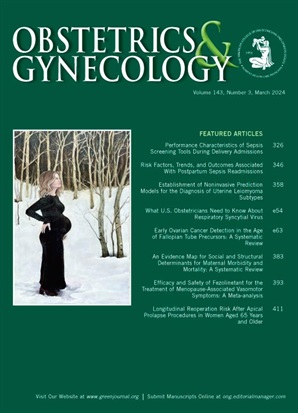人乳头瘤病毒自我收集的实施和随访障碍在德克萨斯州无家可归的人:EMPOWER研究。
IF 4.7
2区 医学
Q1 OBSTETRICS & GYNECOLOGY
引用次数: 0
摘要
虽然美国的宫颈癌发病率很低,但由于筛查、诊断或治疗的不充分,某些人群的发病率和死亡率不成比例。高危人乳头瘤病毒(HPV)自我收集是增加宫颈癌筛查的有效策略;然而,它对无家可归者的有效性尚不清楚。本研究的目的是评估在无住房的个体中自我收集HPV的可行性,并确定后续诊断和治疗的障碍。方法单组可行性试验。在德克萨斯州奥斯汀的社区资源中心前瞻性地登记了25岁或以上的无家可归者。他们接受了有关宫颈癌的简短教育,并有机会进行高危HPV自我采集筛查。样品被送到一家商业实验室进行测试。结果以专人或电话通知。高危hpv阳性结果的参与者被引导到阴道镜随访。所有参与者都回答了一项退出调查。结果2024年5月至10月,共纳入89人,其中87人采集样本。无效样品6份(6.9%),其中2份被回收。83份有效样本中,21份(25.3%)高危HPV阳性,62份(74.7%)高危HPV阴性。在87名收集样本的参与者中,尽管多次尝试与他们联系,但只有46人(52.9%)收到了他们的结果。在21名高危hpv阳性结果的参与者中,4名(19.0%)接受了阴道镜检查。后续护理有许多障碍。结论在无住房人群中开展高危人群HPV自我采集是可行的;然而,对那些检测呈阳性的人进行随访存在重大障碍。虽然高危HPV自我收集可以提高未筛查人群的宫颈癌筛查率,但为了预防宫颈癌,随访诊断和治疗癌前病变是必要的。未来的研究需要确定减少随访率损失的策略。临床试验注册:clinicaltrials .gov, NCT06109870。本文章由计算机程序翻译,如有差异,请以英文原文为准。
Implementation of Human Papillomavirus Self-Collection and Barriers to Follow-Up Among Unhoused Individuals in Texas: The EMPOWER Study.
OBJECTIVE
Although cervical cancer rates are low in the United States, certain populations experience disproportionate incidence and mortality attributable to inadequate access to screening, diagnosis, or treatment. High-risk human papillomavirus (HPV) self-collection is an effective strategy to increase uptake of cervical cancer screening; however, its effectiveness among unhoused individuals is unknown. The objective of this study was to assess the feasibility of HPV self-collection among unhoused individuals and to identify barriers to follow-up diagnosis and treatment.
METHODS
This is a single-arm feasibility trial. Unhoused individuals aged 25 years or older were prospectively enrolled in Austin, Texas, at community resource centers. They were offered brief education about cervical cancer and the opportunity to screen with high-risk HPV self-collection. Samples were sent to a commercial laboratory for testing. Result notification occurred in person or by telephone. Participants with high-risk HPV-positive results were navigated to follow-up with colposcopy. All participants answered an exit survey.
RESULTS
From May to October 2024, 89 participants were enrolled, of whom 87 collected samples. There were six invalid samples (6.9%), two of which were recollected. Of the 83 valid samples, 21 (25.3%) were positive for high-risk HPV and 62 (74.7%) were negative for high-risk HPV. Only 46 of 87 participants who collected samples (52.9%) received their results despite multiple attempts to contact them. Of the 21 participants with high-risk HPV-positive results, four (19.0%) have undergone colposcopy. There were numerous barriers to follow-up care.
CONCLUSION
Our results suggest that it is feasible to implement high-risk HPV self-collection among unhoused individuals; however, there are significant barriers to follow-up for those who test positive. Although high-risk HPV self-collection may improve cervical cancer screening rates among underscreened populations, follow-up diagnosis and treatment of precancerous lesions are necessary to prevent cervical cancer. Future research is needed to identify strategies to decrease loss to follow-up rates.
CLINICAL TRIAL REGISTRATION
ClinicalTrials.gov, NCT06109870.
求助全文
通过发布文献求助,成功后即可免费获取论文全文。
去求助
来源期刊

Obstetrics and gynecology
医学-妇产科学
CiteScore
11.10
自引率
4.20%
发文量
867
审稿时长
1 months
期刊介绍:
"Obstetrics & Gynecology," affectionately known as "The Green Journal," is the official publication of the American College of Obstetricians and Gynecologists (ACOG). Since its inception in 1953, the journal has been dedicated to advancing the clinical practice of obstetrics and gynecology, as well as related fields. The journal's mission is to promote excellence in these areas by publishing a diverse range of articles that cover translational and clinical topics.
"Obstetrics & Gynecology" provides a platform for the dissemination of evidence-based research, clinical guidelines, and expert opinions that are essential for the continuous improvement of women's health care. The journal's content is designed to inform and educate obstetricians, gynecologists, and other healthcare professionals, ensuring that they stay abreast of the latest developments and best practices in their field.
 求助内容:
求助内容: 应助结果提醒方式:
应助结果提醒方式:


